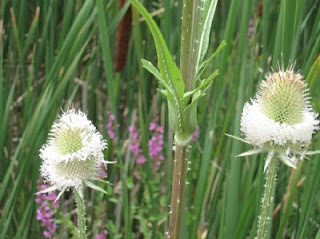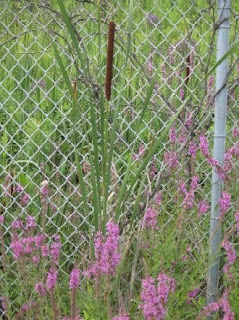Recently, I’ve been walking through Buckhorn Island State Park. It is a wildlife preserve and an Important Bird Area. Buckhorn Island State Park is a good example of the wetlands of the northeastern part of the United States. It features many varieties of tall grasses and cattails, as well as numerous species of migratory birds. Walking on the trail in Buckhorn Island State Park is quite delightful for several reasons. The first is that there are no cars! The second is that I can get very close to the Niagara River. I like looking for the fish. Mostly, I find tiny fish, swimming in great schools! The third is that, on occasion, I can get a snack. Earlier this summer, I enjoyed delicious raspberries. In the autumn, I will enjoy wild grapes. OK. So, the grapes have many, many seeds. It makes eating into a bit of work. Still, the tasty grapes are worth the effort. And, throughout the island, I can find crab apples just falling off of the trees, calling to be in my tummy!!! The blackberries are ripening, too.
The main disadvantage of walking on the trail is that leaving the trail to wander through the woods is really not an option. Poison ivy grows just about everywhere! Fortunately, I can now recognize what it looks like.
All of these things are good.
But there is one thing that is not so good.
The emerald ash borer.
This insect, which came from China on wooden pallets which contained imported consumer goods, is dangerous in its larval state to the ash tree, a type of tree that is abundant in New York State parks. In the parks and elsewhere, you can see purple boxes hanging. I think that they are catchers for emerald ash borers. The larval emerald ash borers does exactly what its name suggests. It bores into the inner bark of the tree and eats it. That can cause the tree to die. The emerald ash borers travel on wooden surfaces.
So… please do not transport firewood from place to place. If you are going camping, please purchase your firewood at the place where you are camping. If you don’t use all of the firewood, just leave the leftovers for someone else to use. Don’t transport that wood and any potential insect life to another place where that insect life could wreak havoc.


